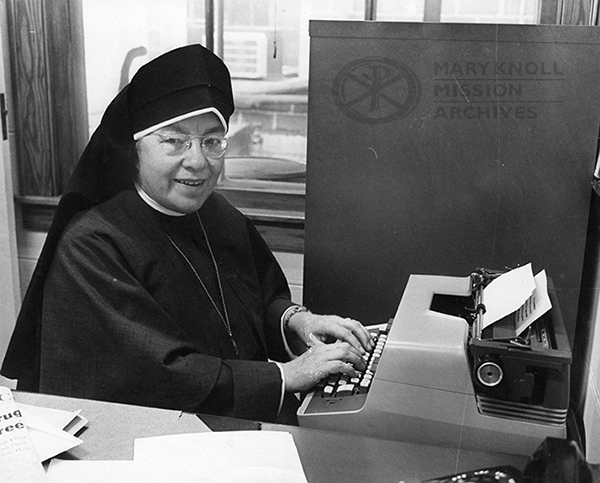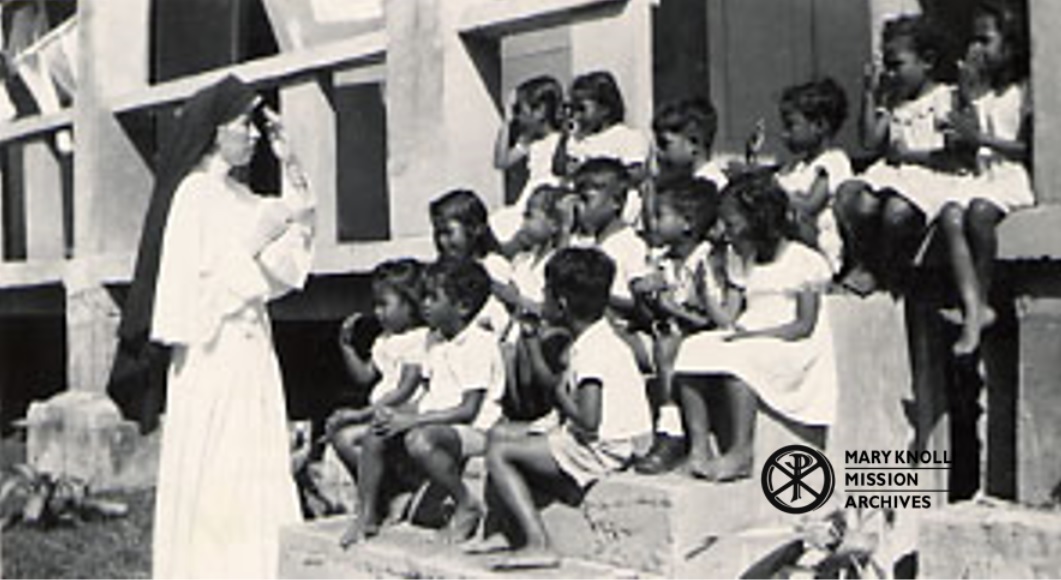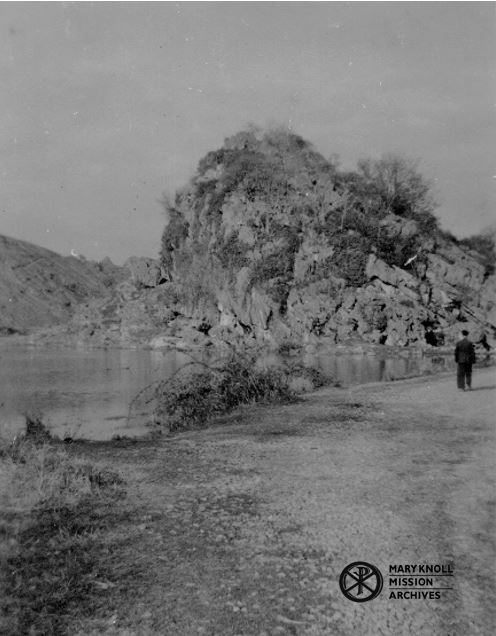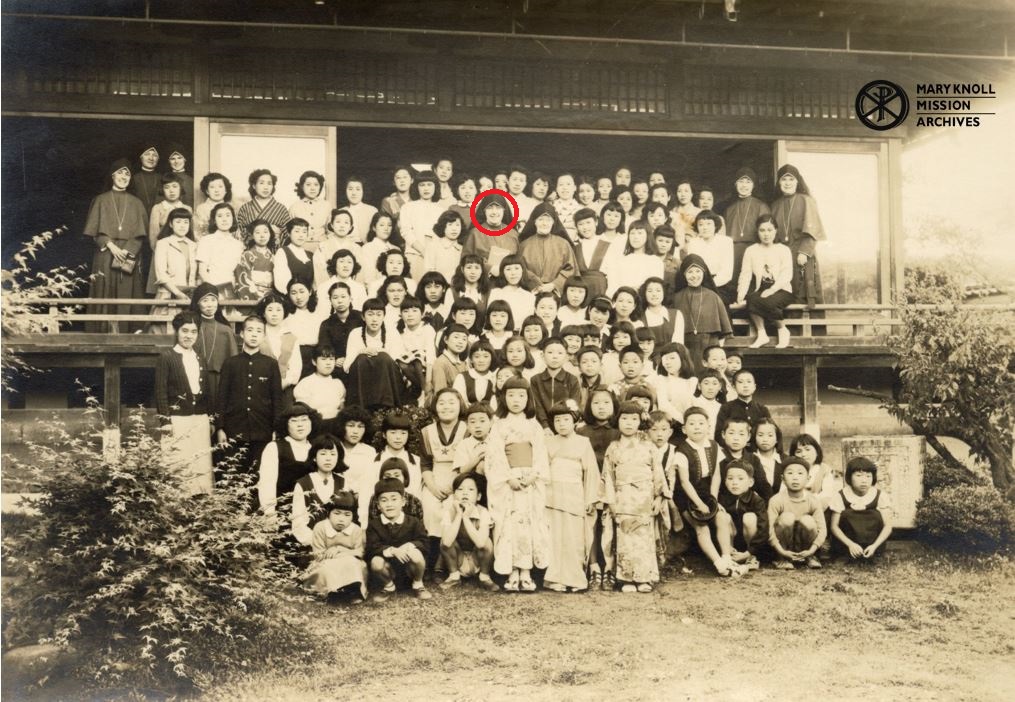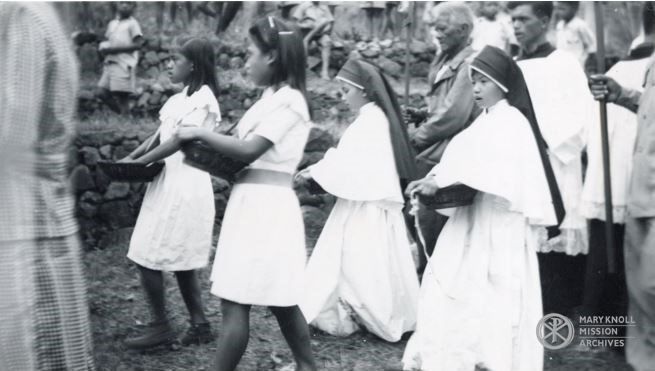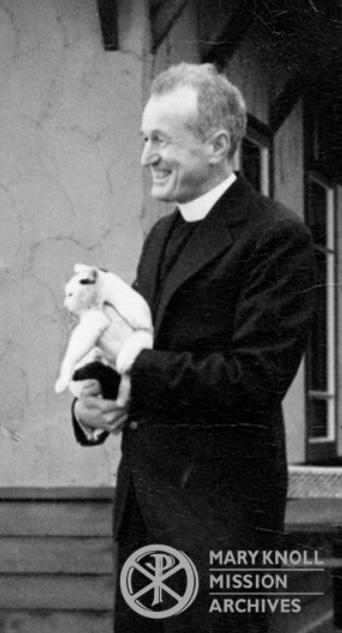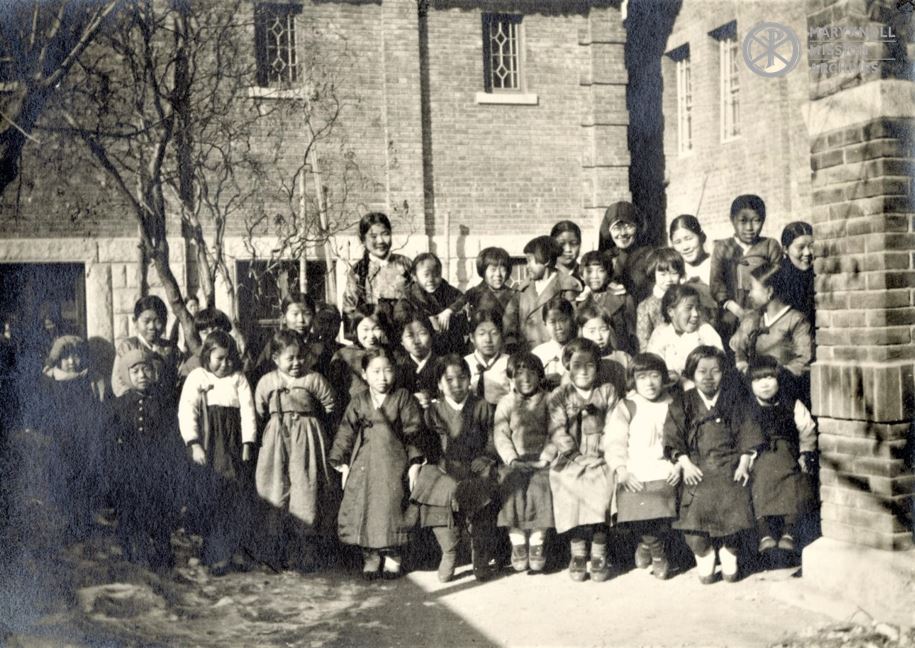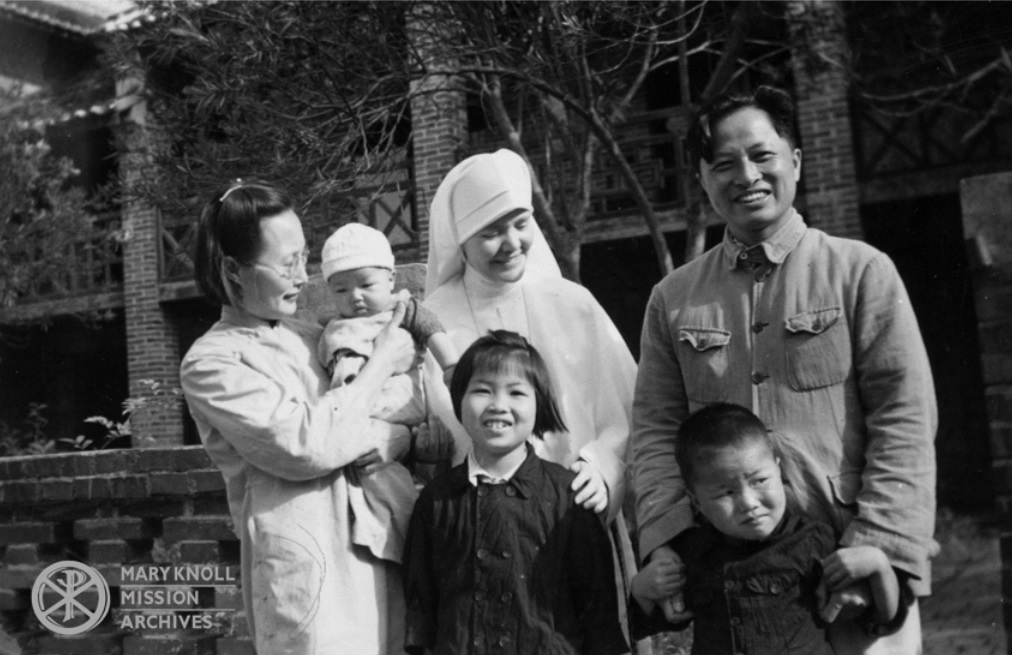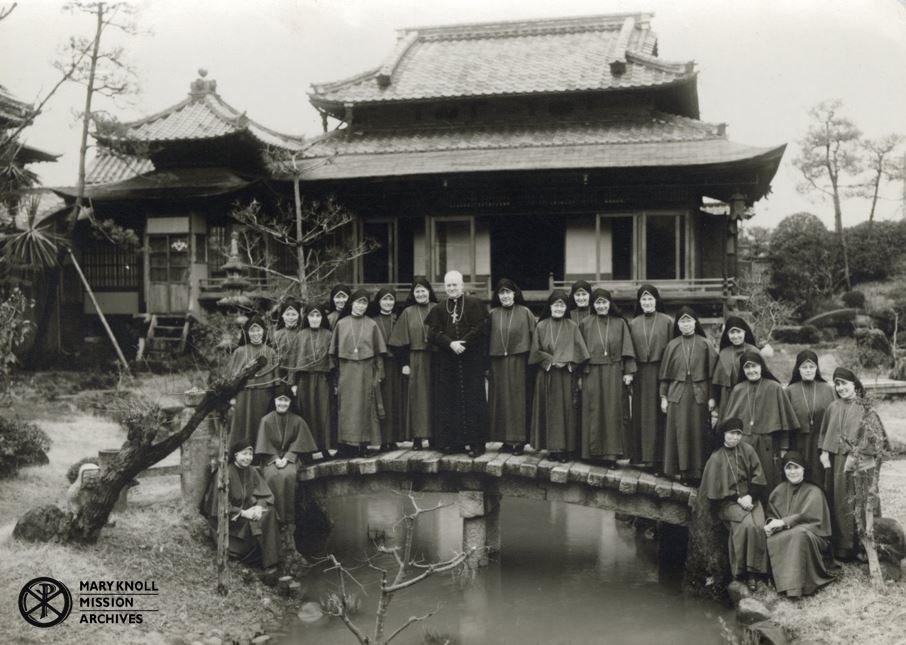Pacific Hopscotch was written by Sister Maria del Rey Danforth and published in 1951. It records the Maryknoll Sisters’ work in and around the Pacific. Specifically, in China, the Philippines, Guam, Palau (in the Caroline Islands), Japan, Korea, and Hawaii. Sr. Maria del Rey was a journalist who joined the Maryknoll Sisters in 1933. She first went to mission in Hawaii and the Philippines. After WWII, she returned to New York and established the Publicity (later Communications) Department at the Sisters Center. For the next twenty years, Sister traveled the world. She gathered information about the Sisters’ mission work and experienced it for herself. Then, she compiled her findings into many bestselling books, including Pacific Hopscotch.
Painting Word Pictures
With these well-told stories, the missions come alive! Even if you have never been to places like Japan or the Philippines, with Sr. Maria del Rey’s help, you can see those places from the Sisters’ point of view. The detail she includes helps the reader picture each scene. The mountains, the people – its as if they’re in front of you. The visceral descriptions make the stories feel real and tangible. And they ensure the reader understands what the Maryknoll Sisters actually saw and did every day. Click on the arrows below to read stories from Palau, China, and Japan. Click on the photos to enlarge. Play the audio clip below to hear a story from the Philippines.
Everyday Moments
Sr. Maria del Rey also showcased everyday moments familiar to average Americans. She knew that anyone can picture their own families or neighbors getting ready for school or playing ball games in the yard. So she told stories like the ones below. Through stories like these, readers can feel personal connections to the Maryknoll Sisters’ work. They can see their own lives reflected in the lives of people around the world. Click on the arrows below to read stories from the Philippines, Korea, and China. Click on the photos to enlarge. Play the audio clip below to hear a story from Japan.
Pacific Hopscotch is just one example of a book that shows Maryknoll’s mission work in tangible, relatable ways. Some others include Same Fate as the Poor by Judith Noone, Singing to the Dead: A Missioner’s Life Among Refugees from Burma by former Lay Missioner Victoria Armour-Hileman, and Once Upon a Time in Africa by Fr. Joseph Healey. The average American can pick up any of these books and travel to parts of the world they would never see in person. And through stories like those in Pacific Hopscotch, readers can better relate to foreign cultures and see common humanity around the world.

